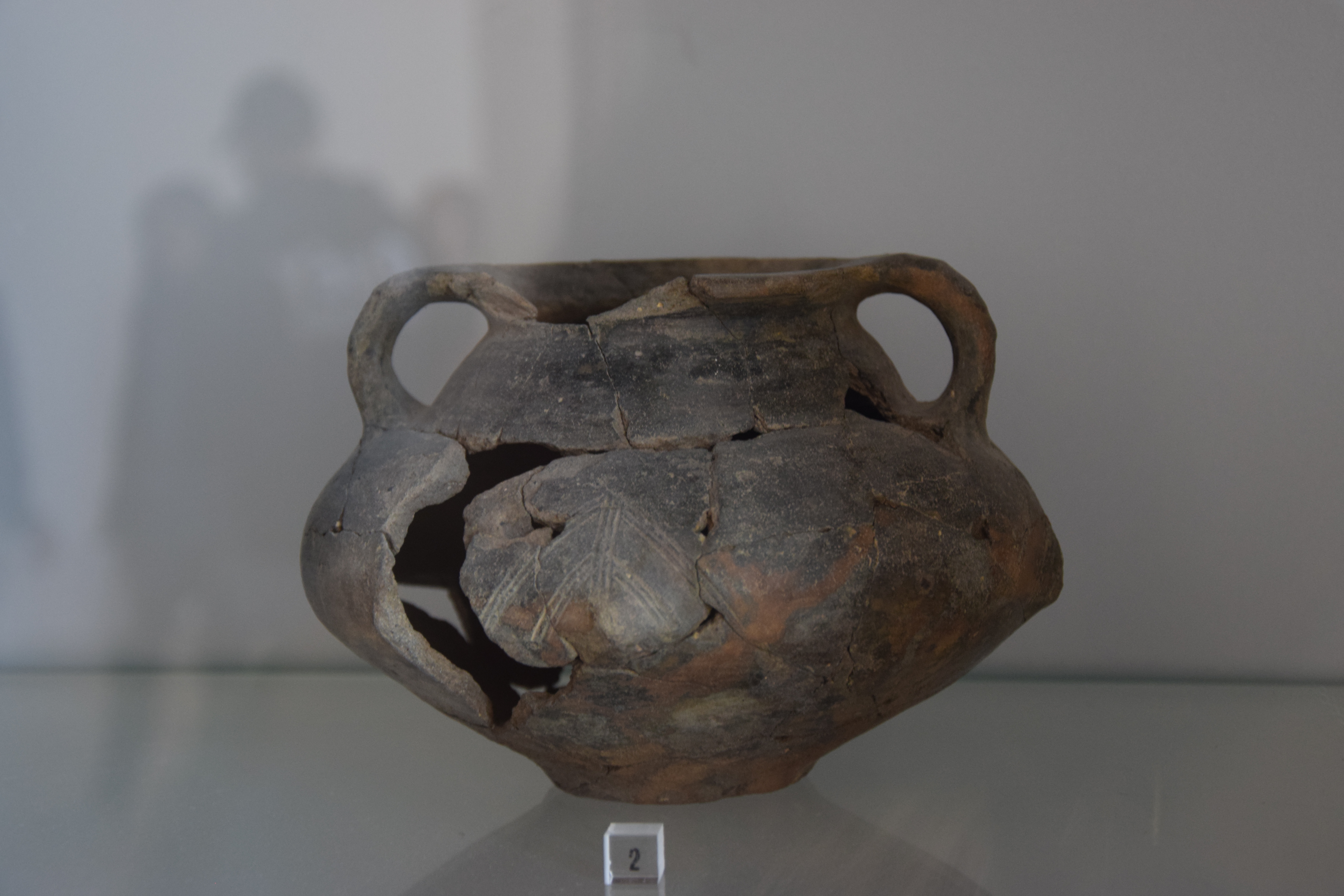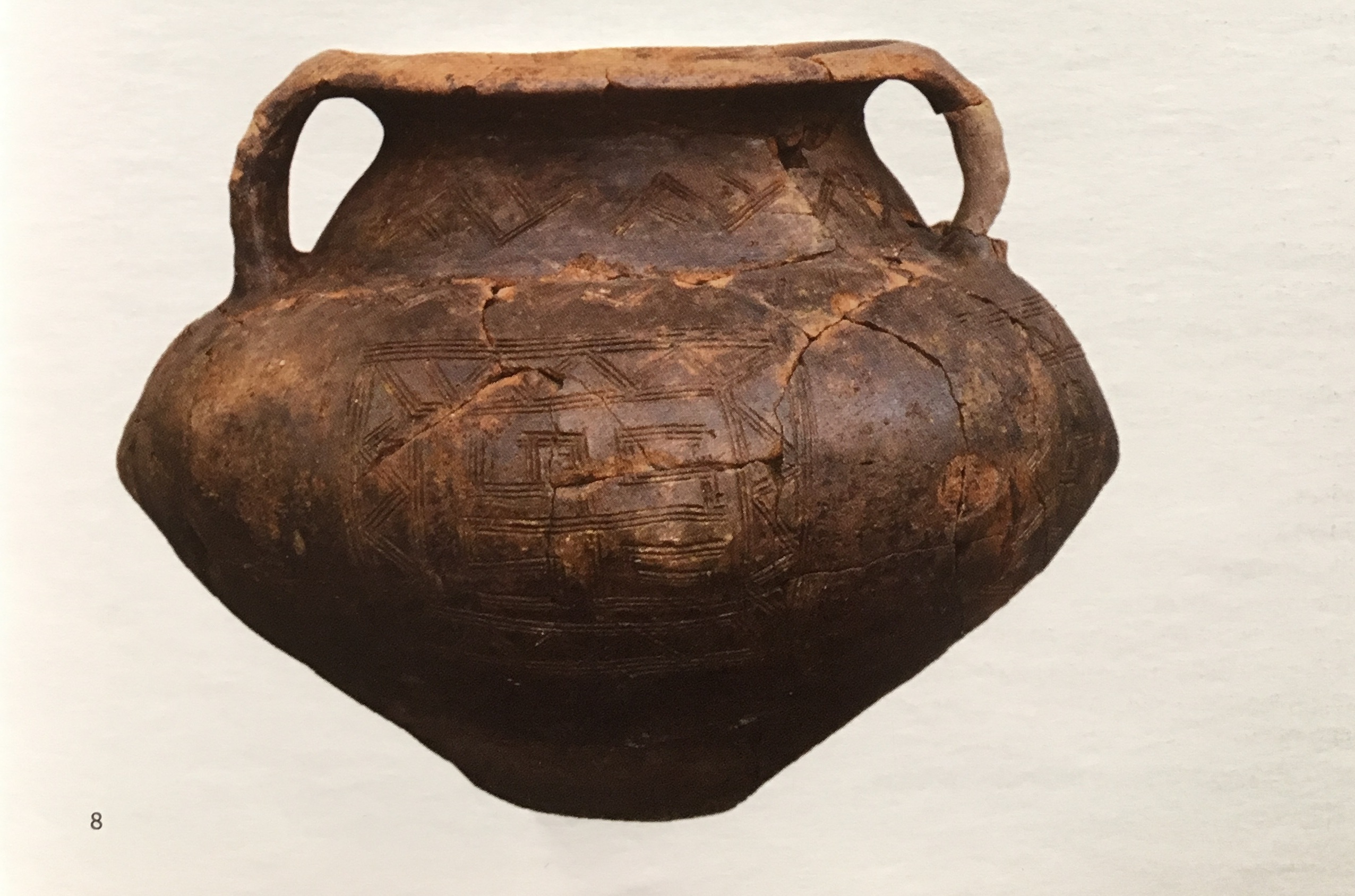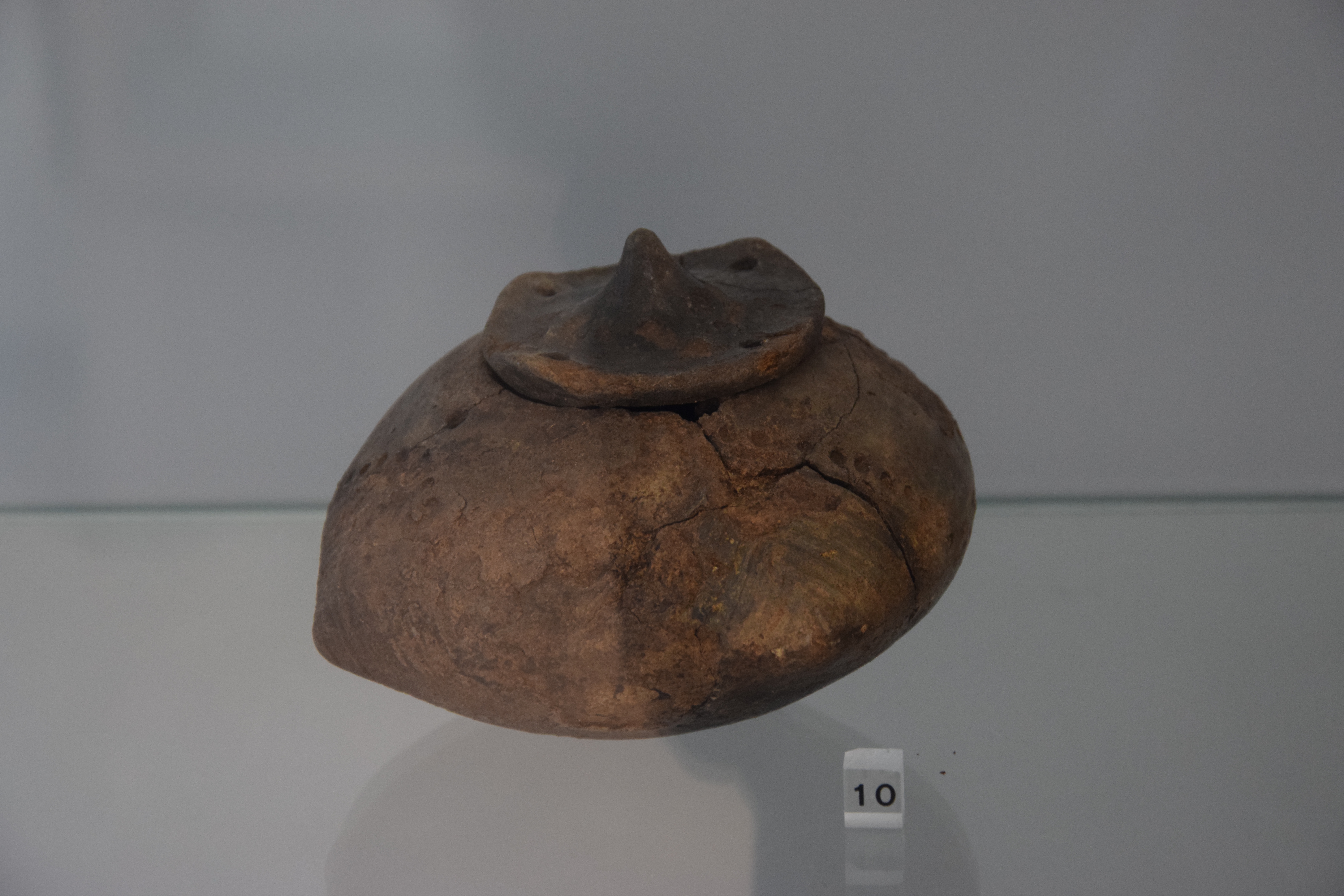These depicted jars are amphoras of the pre-Hellenic period (IX cen b.C.) so before the arrival of the Greek colonists in that area, all from the same funerary set of a “grave” tomb (dug in the ground with the buried body; similar graves were sometimes marked by a low wall that constituted the perimeter; the set, near the head, contained jars for oils and ointments or victuals) in Cumae.
The three amphoras have a “biconic” body, composed by two superimposed and fit cones. The clay appears very rough because it was worked using the “impasto”, without lathe.
The first vessel from the top has vertical stick handles on the shoulder and on the high part of the neck and on the rim; the second one has no handle, while the third one has two “flat” handles on the rim and on the shoulder. The first amphora has a low ring-shaped foot, the third one has flat-foot, and the second one, the only one with a lid, has no neck and has a more lenticular body than the others.
In the first two cases, the decoration is placed on the stomach and has herringbone engravings, marked on the top, in the second jar, by small holes. In the third vessel the decoration extends also to the neck, with a motif engraved with a three-teeth comb.



